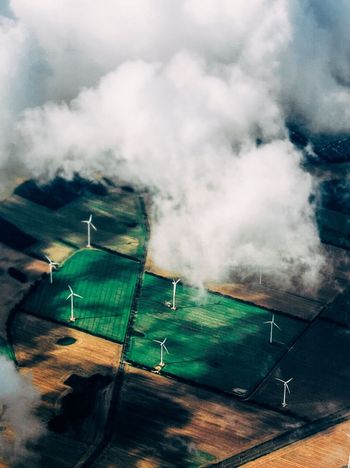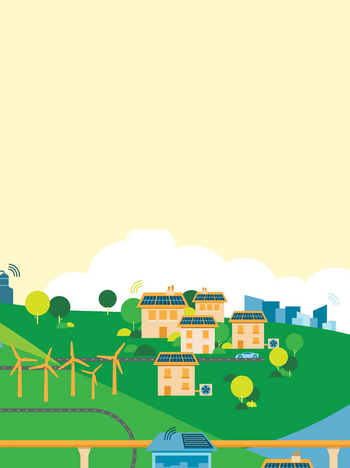Blackout: How is Energy Rich Australia running out of energy?
Australia has become, quite by accident, a live experiment in managing high penetration of intermittent renewable generation in a modern electricity grid. The transformation of the Australian electricity system defies the textbook theory: it has one of the highest rates of renewable generation per capita in the world, yet it has still one of the highest emissions systems too. More than 25GW of wind and solar PV have been dropped onto an ageing, predominantly coal fired generation fleet. The results have been both challenging and instructive; and the experiment is far from over.
By Matthew Warren
Australian governments and policy makers didn’t plan on being a global renewables research lab. The solution was created by a combination of factors. First, Australia’s isolated geography and warm climate. Second, populist domestic politics laced with drought and climate change. Third, Australia’s historical dependence on coal as the primary fuel source for electricity generation. “Blackout – How is energy rich Australia running out of electricity” tracks the origin and execution of this remarkable, unplanned experiment.
There weren’t any warning signs. Australia’s 20th century electricity story followed a similar path to other richer countries. Speculative, ambitious, and mostly loss-making investments in infant electricity systems were acquired by governments and developed into electricity grids radiating out from Australia’s remote towns and cities. With the exception of hydro electricity on the island of Tasmania, these systems were primarily powered by coal fired boilers, able to tap into the vast seams of black and brown coal that run along Australia’s populated east coast.
These isolated, state-owned grids expanded rapidly in the post-war boom. Australia’s electricity generation increased eight-fold from the 1950s to the 1980s. To meet this growing demand, governments built a fleet of new giant coal fired power stations adjacent to the rapidly expanding coal fields north of Sydney, and west and north of Brisbane. Australia’s growing coal exports helped power the post-war boom in Japan and Korea. Electricity supply was seen as an instrument of industrial development: more was better. Governments carried borrowing risks that made a low-cost system even cheaper, attracting investment in aluminium and other electricity-intense metals processors.
Australian dwellings built in the 20th century reflected local conditions. With mostly mild to warm weather and an abundance of space resulted in the development of a stock of large, open, and poorly insulated houses. The arrival of mass-market residential air conditioning in the late 20th century was eagerly embraced by sweltering Australian households. Australian manufacturing was declining at the same time, fuelled by high labour costs and remoteness to export markets.
The combination of these factors created, by international standards, a particularly peaky electricity demand profile. Total annual demand per capita was modest, but electricity use spiked in winter and rose even higher during summer heatwaves. Major industrial customers were contracted to reduce or stop production to manage these demand peaks. A new fleet of gas generators were built to meet these demand peaks, some only running for a few days a year. An electricity market was created to improve efficiency and reliability; transmission lines connected the five eastern states and a gross pool energy-only market was established.
The serenity of Australia’s cheap, high emissions electricity system was disrupted by climate, not by scientific advice or political commitment, but by drought. A massive drought gripped southeastern Australia for most of the first decade of the 21st century. By 2006, dam levels in cities like Sydney and Melbourne fell so low that millions of suburban Australian gardens could not be watered. Backyard pools could not be filled. The politics of climate change turned with astonishing speed from a vague global process to an immediate threat to the quality of life of ordinary Australians. Major political parties rushed to develop emission trading schemes and mandatory renewable energy targets. What could possibly go wrong?
Political gains on climate change were quickly won and easily lost. A new Australian government in 2007 rushed to design an emissions trading scheme, copying much of the design from the European scheme implemented two years earlier. The Global Financial Crisis in 2008 derailed broad support for its implementation. It was parked, then re-introduced after another election, then removed after the next. Today, Australian politicians of all colours see emissions trading as a political death sentence.
By contrast, renewables policy was a political sugar high. State and Federal governments discovered that subsidies and other support schemes for residential rooftop solar PV systems were wildly popular. Home solar subsidies were dialled up as the cost of systems began to fall, lighting a residential solar boom. Today more than 2.1 million Australian households (more than 20 per cent) have solar panels on their broad roofs. Some suburbs in Adelaide and Brisbane have more than 50 per cent of households with solar.
A renewable energy target of 20 per cent generation by 2020 was legislated in 2009 with the support of both major political parties. This scheme was designed to support development of large scale generation projects, but within a year it became apparent that utility scale projects were competing with residential solar for the same revenue stream. Two renewables schemes were ultimately created. The combined effect of both has tipped Australia past the kilowatt per capita threshold, shared only by Germany and Denmark. Australia is currently the fastest installer of renewable generation per capita on earth.
Big renewable generation has started to slow Australia’s emissions, but they still remain amongst the highest per capita on earth. Without a policy to cut emissions, most of Australia’s coal generators will remain until the end of their operating life. The closure of two generators in 2016 and 2017 spiked wholesale electricity prices and spooked politicians. This has created a perculiar political narrative which seeks to be both pro-renewables and pro-coal. It is unsustainable. Coal will need to continue to exit to make room in the market for renewables.
Australia has plenty of gas to replace its coal generators. While it has recently passed Qatar to become the biggest gas exporter in the world, but nothing is normal in Australian energy markets these days. There’s a gas shortage on the populated east coast. Its new, unconventional gas fields are abundant but dry, and some state governments have banned all onshore gas development, resulting in more expensive gas than similar new developments in North America. Australian electricity companies are working out that the cheapest replacement for coal are renewables supported by fast-start, on-demand gas engines.
The high ratio of renewables has created technical and market challenges. Voltages approach maximum operating limits in suburbs with high solar PV, tripping off inverters and reducing the efficiency of the systems. Due to favourable market conditions, around 40 per cent of the large scale renewables were installed in South Australia, one of the smallest and more isolated states in the market. It now runs on approximately 50 per cent wind and solar. The surg in wind and solar generation made commercial profitability impossible for the state’s last remaining coal generator and it was closed. Then in 2016, the entire state blacked out during a wild storm, exposing operational inexperience in handling large renewables under extreme conditions.
Managing summer demand peaks has also become more challenging with less dispatchable generation. The weather plays an increasingly important role in both driving demand and creating supply. It is not always a perfect fit. Supply of once ubiquitous services like frequency and inertia have now become scare and more expensive. South Australia is scheduled to get four large synchronous condensers to stabilise power quality. Energy policy agencies are now questioning if the energy market can function properly during a transition from coal to renewables and whether it can drive efficient investment in supporting technologies. The less optimistic would prefer a return to more central grid planning until the situation has been sorted out.
Recent devastating bushfires across Australia have killed more than 30 people, millions of native animals and burnt out an area the size of Denmark. They have also blanketed major cities like Sydney and Melbourne in thick smoke for days, forcing a range of outdoor summer activities to be cancelled. The Australian public anxiety about climate change has returned. Australia’s pathway to a low carbon electricity system is to enable investment in its natural strengths: cheap and abundant renewables supported by on-demand gas generation, and other storage options as they evolve. In 2020 we will see if the return of public anxiety about climate change is a sufficient motivator for Australian governments to deliver the policy reforms needed to deliver this.


